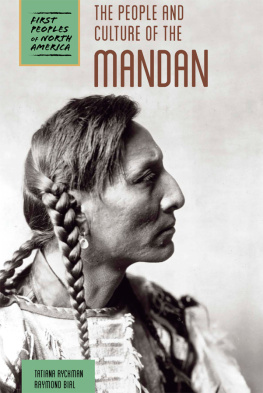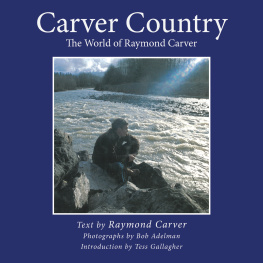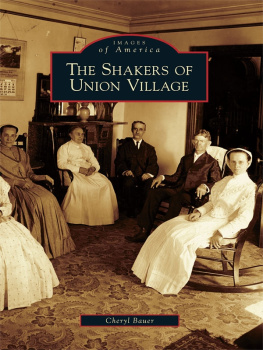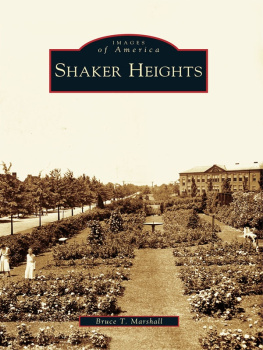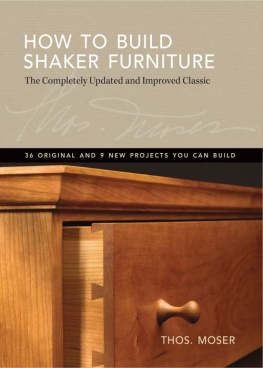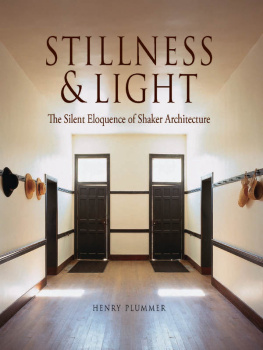Copyright 2008 by The University Press of Kentucky
Scholarly publisher for the Commonwealth,
serving Bellarmine University, Berea College, Centre
College of Kentucky, Eastern Kentucky University,
The Filson Historical Society, Georgetown College,
Kentucky Historical Society, Kentucky State University,
Morehead State University, Murray State University,
Northern Kentucky University, Transylvania University,
University of Kentucky, University of Louisville,
and Western Kentucky University.
All rights reserved.
Editorial and Sales Offices: The University Press of Kentucky
663 South Limestone Street, Lexington, Kentucky 40508-4008
www.kentuckypress.com
12 11 10 09 08 5 4 3 2 1
Library of Congress Cataloging-in-Publication Data
Bial, Raymond.
The Shaker village / Raymond Bial. [Rev. ed.].
p. cm.
Rev. ed. of: Shaker home. 1994.
Includes bibliographical references.
ISBN 978-0-8131-2489-6 (hardcover : alk. paper)
1. ShakersUnited StatesJuvenile literature. I. Bial,
Raymond. Shaker home. II Title.
BX9784.B53 2008
289'.8dc22
2007043579
The Shaker Village is lovingly dedicated to my wife, Linda, and my children, Anna, Sarah, and Luke, who accompanied me in making photographs for this book.
Whether wandering through the Shaker dwellings, walking through a nearby woods brightened with wildflowers, or strolling around the village at dusk, being with them on these journeys has been one of the most delightful experiences of my life.
Whether in Sabbathday Lake, Maine, or Pleasant Hill, Kentucky, Shaker villages seem far removed from the rest of the world. To the Shakers who once inhabited these placesand to the handful still living in New Englandeach community served as a retreat from the world and the center of their universe.
Seen from a distance, a cluster of trim buildings is the first indication that the Shakers pursued a unique way of life. Not only are the buildings solidly constructed with thick stone foundations, but everything from the lines of the roofs to the placement of the windows expresses simplicity and grace. The Shakers sought perfection in their lives, intending to create heaven on earth, and the buildings indeed have a light, airy feel about them. As one brother explained, We think that man cannot hope to attain a spiritual heaven until he first creates a heaven here on earth.
Visitors who stroll along the paths lined with trees, wade through the undulating green fields, or wander through the buildings can still feel the presence of the community of souls who once worked and worshipped in these villages. The efforts of the Shakers to create a utopian society are reflected in everything from the elegant sweep of a picket fence to the ingenious workings of a door handle.
Known formally as the United Society of Believers in Christs Second Appearing, the Shakers are the oldest communal society in America. For more than two hundred years, they lived in these secluded villages, sharing quiet lives and striving for perfection in every detail of living, from tending gardens to making furniture.
From Maine to Kentucky, Shaker communities once dotted the eastern half of the United States. Yet while the number of Shakers has declined, other people have become increasingly fascinated with their way of life. The Shakers have come to be widely admired, not only for their hundreds of clever inventions and remarkable creations but for their progressive values and beliefs. As Sister Frances Carr of Sabbathday Lake observes, Well go away in time, as will everybody. But our ideas and our way of life will never go away.
The Shakers were not always viewed so favorably. During the early years of their religion in the mill town of Manchester, England, they were persecuted. Even their name was originally a derisive term: Some of the Shakers became so excited during their worship services that they would shout, tremble, and whirl about, shaking off their sins. Because many of the early Believers came from the Society of Friends, or Quakers, they became known as the Shaking Quakers, later shortened to Shakers. Although the term was used in derision, the Shakers eventually adopted it themselves. They also refer to themselves as Believers or members of the United Society.

In 1758 the Shakers attracted a young woman named Ann Lees (later shortened to Lee). Married in 1762 to a blacksmith, she bore four children, three of whom died in infancy and the fourth as a small child. Always a spiritual woman, Ann Lee turned to religion after these tragedies. In giving herself fully over to her faith, she declared, My soul broke forth to God.
Ann Lee began to take an increasingly active role in the sect, notably speaking out against cohabitation of the sexes. Meetings grew more animated, and outside opposition to them became so intense that at one point Ann Lee was imprisoned for profanement of the Sabbath. Upon her release, she spoke of having had a vision of Christ. Given the title Mother, she became the leader and the spiritual force of the Shakers.
To escape persecution in England, Mother Ann and seven followers immigrated to the American colonies in 1774. They settled on land that is now Watervliet, New York. For several years they scratched out a living, failing to attract new members. However, Mother Anns charismatic personality gradually began to draw people. When she died in 1784 at the age of forty-eight, it was left primarily to James Whittaker, who had accompanied her from England, to build an organization that would sustain the fledgling society of roughly one hundred members.

Father James began the process of gathering the Shakers in their own villages, apart from the evils of the world. The year after Mother Anns death, at the dedication of a meetinghouse in New Lebanon, New York, Father James introduced the gospel orders. This formal set of rules for the Shakers included the complete separation of the sexes. Husbands, wives, and children were placed in their own communal families, with all property held in common. All men shall come and go out at the west doors and gates; and all women at the east doors and gates.












